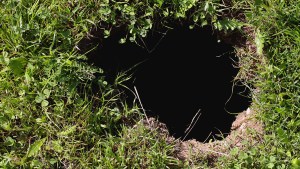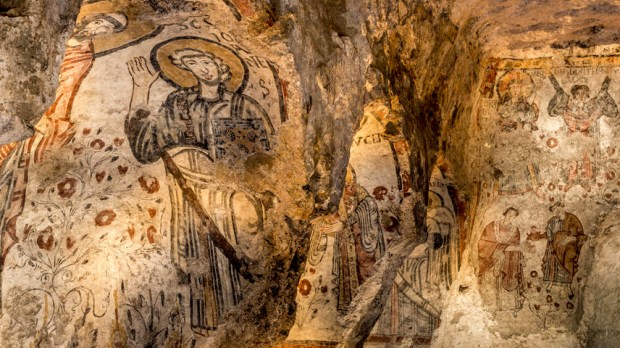When Benedictine monks got to the trail of Pietrapenta, near the southern Italian city of Matera (nicknamed the subterranean city) around the 9th century, they decided to settle in the abundant caves found in the slope of a rocky ravine locally known as La Gravina, which had already been inhabited back in the Paleolithic and Neolithic eras. One of those caves is now known as “The Crypt of Original Sin,” considered to be the Sistine Chapel of rock-hewn churches.

Read more:
Not a rabbit hole, but a Templar underground church?
The crypt itself was almost forgotten and neglected for centuries, and it was even used as a refuge for shepherds, who would refer to it (according to the post published by Atlas Obscura) as “the cave of the 100 saints,” due to the abundant paintings covering its walls. Here one can “read” the biblical history of Creation, but can also appreciate the images of the apostles Peter, Andrew, and John; the Archangels Michael, Raphael and Gabriel; and an image of Our Lady. One of the wall paintings images, depicting Adam and Eve and the snake around the Tree, gives the crypt its name.
Read more:
Is this cave in Turkey the place where Saint Peter celebrated Mass?
Nowadays, the crypt is one of UNESCO’s World Heritage Sites.
Check out the photos!
Grateful appreciation to VisitMatera.it for the great images.


